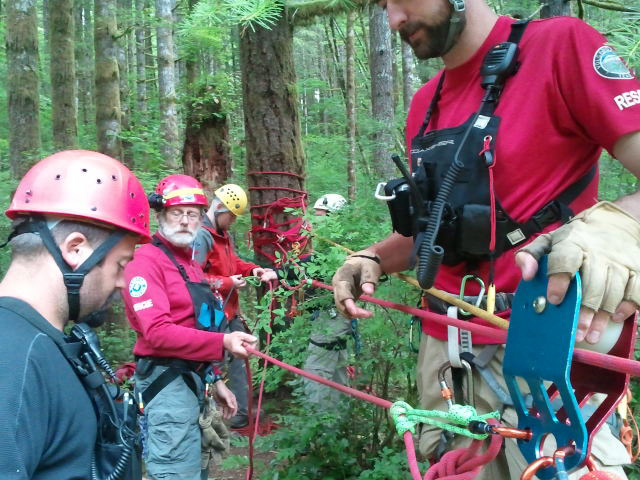Visit the Volcano Rescue Team’s website.
Mount St. Helens summer climbing permits are sold out for climbing above 4,800 feet till mid-September. Travis Southworth-Neumeyer of the Mount St. Helens Institute says up to 100 permits can be issued per day and that current conditions are tricky. Click here for its website.
There’s still snow and ice on the mountain, but it’s melting rapidly. The most dangerous part, he says, is for people who glissade (slide) down the mountain and can’t stop once they reach a boulder field.
“The footing is really difficult in that transition area,” Southworth-Neumeyer says.
Often the MSHI Mountain Steward Volunteers will arrive first to an accident and stabilize an injured climber until the Volcano Rescue Team from Yacolt arrives to provide more advanced medical aid.




